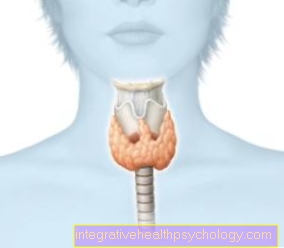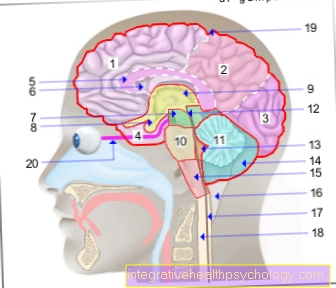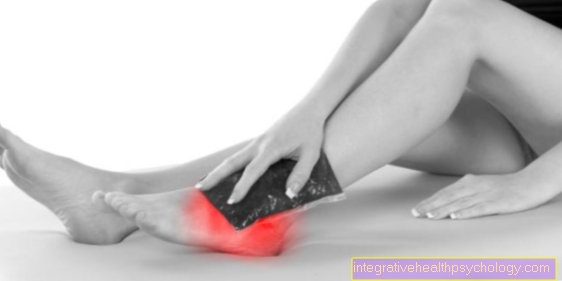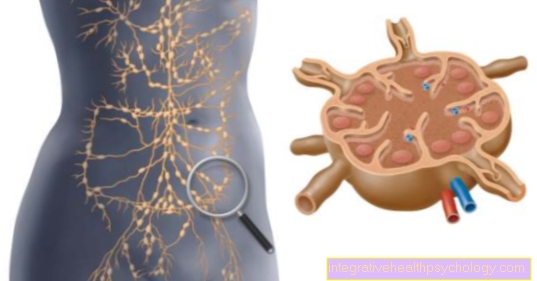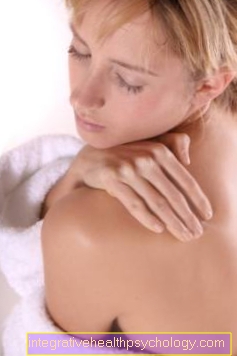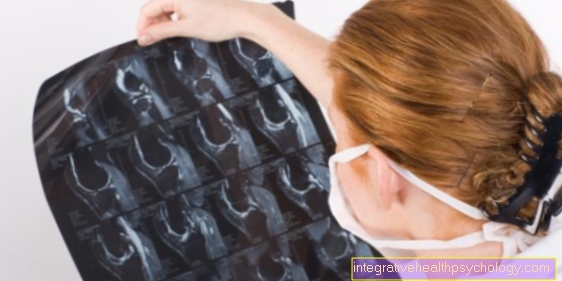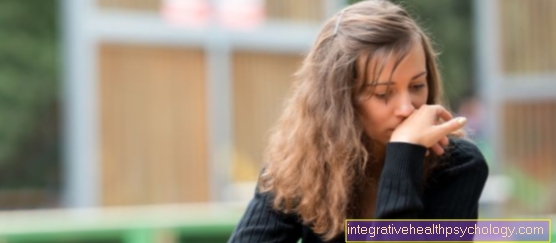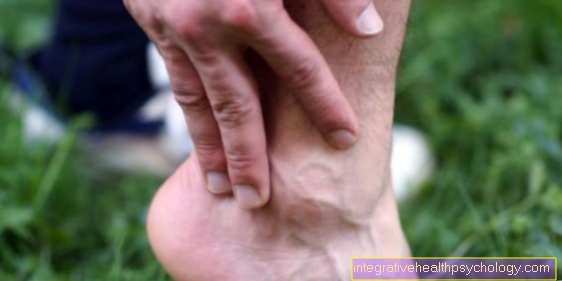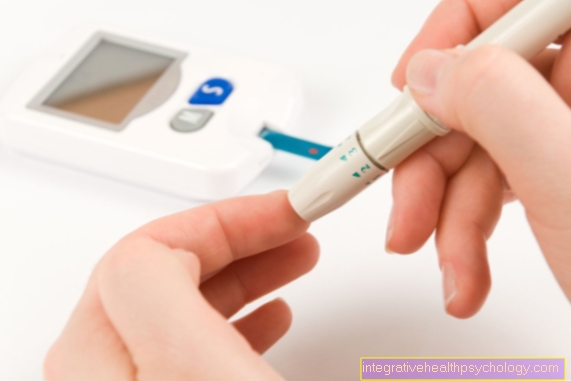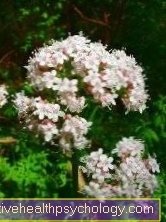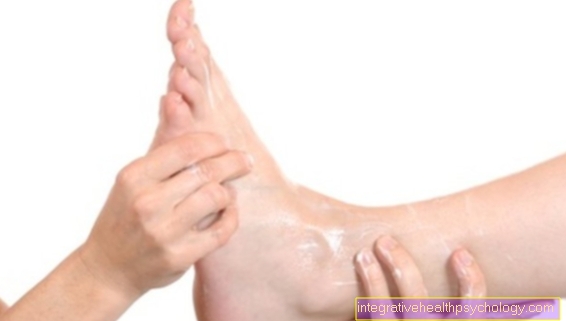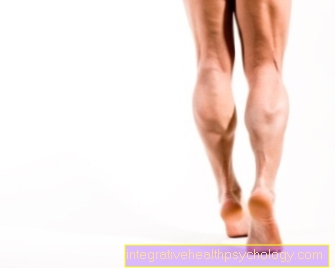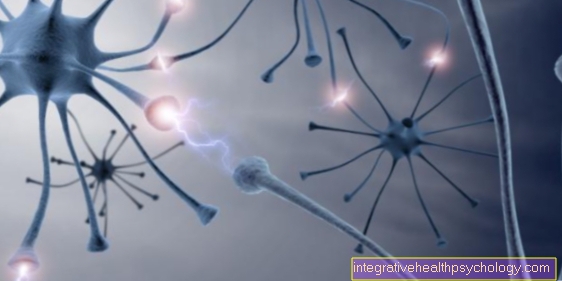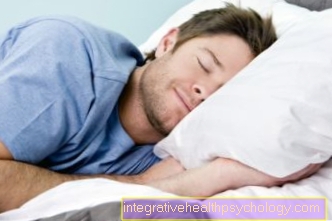Connective tissue massage
introduction
The connective tissue massage is one of the reflexology massages and is also known as subcutaneous reflex therapy. This is a manual stimulation therapy that is applied to the back and is based on a line and pull technique. The underlying idea behind the massage is that the treatment does not only work locally, but can also have effects on internal organs, the musculoskeletal system and blood vessels via certain nerve stimuli.
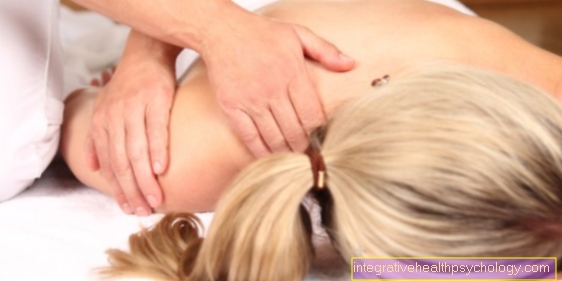
How does a connective tissue massage work?
In the ideal case, the connective tissue massage relaxes the massaged connective tissue and relaxes the internal organs, muscles and vessels. On the body surface or on the skin, a distinction is made between different zones, the so-called Head's zones. Each of these zones is in a neural connection to an internal organ, as they are supplied by the same nerve cord.
These organs should be positively influenced by massaging the relevant skin segment. The organ's blood flow and metabolism are stimulated, which means that the organ is better supplied with nutrients. On the basis of these events, the practitioner should have a good knowledge of the reflex arcs and the nervous system.
Therapists assume that tension in the muscles and connective tissue is often caused by diseases of the internal organs, which means that the skin is more tightly connected to the subcutaneous tissue, so that the subcutaneous connective tissue appears swollen or drawn in. By relieving this tension, an attempt is made to improve the situation of the affected organ and the adhesion of the connective tissue between the subcutaneous fatty tissue and the muscle fascia can be loosened.
The treatment relaxes the smooth muscles of the peripheral blood vessels, which widens the vessels and improves blood flow. This increase in blood flow (Hyperemia) represents the first and most important reaction to the connective tissue massage. In addition to widening the vessels, organ functions such as secretion and movement are normalized and improved via the reflex arc. In the case of functional pain syndromes, the treatment can have a pain-relieving effect.
Furthermore, the connective tissue massage can also have effects on the peripheral nervous system, so that the patient begins to sweat, for example. It is typical for connective tissue massage that the patient feels a clear sensation of cutting in the treated area during the treatment, as if the therapist was not performing the treatment with the fingertips but with the fingernails. Accordingly, the treatment is perceived by the patients as rather unpleasant. The higher the tissue tension, the stronger this feeling of cutting. The treatment also causes the formation of wheals for a limited time (small red bumps on the skin), which are a reaction to the increase in blood flow.
Blue, non-painful spots may appear as a result of the treatment, especially in patients with weak connective tissue. Sometimes patients observe about one to two hours a feeling of tiredness after the massage.
How well does a connective tissue massage help against cellulite?
The connective tissue massage was developed for the treatment of various complaints and clinical pictures. Above all, these are rheumatic diseases, complaints of the spine and the musculoskeletal system or the nervous system (Neuralgia).
A connective tissue massage can also be successful with cellulite. However, since the connective tissue massage can sometimes be painful and uncomfortable depending on the thickness and is actually intended for pathological processes, one should rather resort to a more tailored massage technique for cellulite. These include, for example, the plucking massage or lymphatic drainage.
Can you do a connective tissue massage yourself?
The connective tissue massage, which goes back to the German physiotherapist Elisabeth Dicke and was developed in 1925, follows a clear structure. It starts with sessions in the pelvic region and then extends to the back and stomach. The beginning in the pool is called the so-called "small build-up". The extension to the back is called the "large build-up". Strictly speaking, a connective tissue massage according to thickness cannot be performed alone. Many parts of the body cannot be reached or can only be reached with great difficulty. Furthermore, the adequate technique cannot be performed alone, which is why a connective tissue massage according to thickness must always be carried out by an experienced masseur or physiotherapist.
Of course, you can take over aspects of the connective tissue massage and do it on yourself. Easily accessible areas are, for example, the thighs and calves. Since the connective tissue massage follows a special technique, you should have it performed professionally on yourself at least once. Rough work steps include, among other things, the flat moving of the subcutaneous fatty tissue with the thumb and fingertips as well as the superficial moving of the skin.
When used correctly, connective tissue massage leads to a brief, intense, cutting sensation in those who experience it.
Are there also devices that perform a connective tissue massage?
There are various massage devices that can be purchased for personal use. However, these devices cannot replace a professional physiotherapist, as the connective tissue massage follows a precisely defined, manual technique.
Of course, the basics of the techniques or elements of the massage processes can also be used yourself, but a proper connective tissue massage should only be carried out by a professional. However, there is nothing against purchasing and using massagers for domestic use. You should always follow the manufacturer's instructions and, if you have any questions, contact a physiotherapist.
Who are connective tissue massages suitable for?
The connective tissue massage provides relief from various diseases. It is mainly used for diseases of the musculoskeletal system, such as arthrosis, rheumatic diseases or diseases after trauma. Due to the cutivisceral reflex arc, the massage can also be used for diseases of internal organs, such as respiratory diseases, diseases of the digestive organs, the urogenital organs and non-acute organ inflammation.
Due to its blood circulation-promoting properties, it has good effects on vascular diseases in the context of arteriosclerosis (Hardening of the arteries), arterial circulatory disorders, venous disorders such as varicose veins. It can be used to treat pain of various origins, for example it has been successful in treating menstrual cramps and migraines. Another area of application is neurological disorders such as paralysis, spasticity or pain in the supply area of a nerve (neuralgia). The connective tissue massage can also be used to treat stress.
When should connective tissue massages not be performed?
In principle, the connective tissue massage does not have any side effects, but should tend to be avoided in certain diseases. Contraindications or diseases for which you should consult your doctor before using a connective tissue massage are:
- acute inflammatory processes
- Cardiovascular diseases
- Cancers
- an acute asthma attack
- Febrile illnesses
- Vascular disease
- increased tendency to bleed
- acute injuries or open wounds
Therapy process
The treatment lasts about 10-30 minutes and will two to three times a week carried out. However, the first treatments should take longer to be more effective. To achieve the best effect, the patient should take a 30-minute break after treatment. As a rule, the connective tissue massage begins with the so-called small build-up, in the area of the lower back section (Sacrum). The massage ends in the upper back area.
Even if the tense area mainly affects a certain area or organ, the treatment should always include the entire back, as the individual organ systems are connected to one another and can thus influence one another. The massage is mainly carried out by the ring and middle fingers using a line and pull technique. It relates to the skin, subcutaneous tissue and fascia tissue.
The therapist can use different techniques. In the "flat technology“You move the subcutaneous tissue flatly with your thumb and fingertips. The "Skin technique“On the other hand, it works more superficially by working on the superficial shifting layer of the skin on the surface and also over a large area. In the "Subcutaneous technique“You have to use a stronger train.
The technique is most effective the higher the voltage applied. Finally there is the "Fascia technique' (Fascia = tough layer of connective tissue that surrounds muscles or entire sections of the body), while the therapist hooks the edges of the fascia with his fingertips. Compared to the other techniques, the strongest pull results from the fascia technique.
Figure strengthening connective tissue

Strengthen connective tissue
I - skin with strong
connective tissue
(Firm skin surface)
II - skin with
Connective tissue weakness
(Dents on the
Skin surface)
- Skin - Cutis
- Strengthened fabric fibers
- Normal fat cells -
Adipocytes - Deep layers of fat
(Fat reserve) - muscle
- Enlarged fat cells
- Weak tissue fibers
Methods affecting the connective tissue
at least have a positive influence:
A - weight normalization
B - Balanced diet
(fresh fruit, vegetables, reduction
sugar and animal fats)
C - Sufficient drinking amount
(about 1.5 - 2 liters a day)
D - Exercise regularly
(Jogging, walking, swimming,
Cycling, gymnastics-stomach-legs-buttocks,
Aqua jogging)
E - massages
(Seaweed wraps, lymphatic drainage massages)
F - skin care
(Anti-cellulite creams)
G - Surgical Measures
(Liposuction, tummy tuck,
Thigh and upper arm lift)
You can find an overview of all Dr-Gumpert images at: medical illustrations
Figure connective tissue
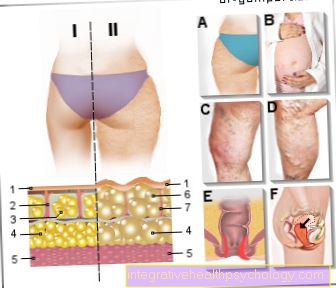
connective tissue
I - skin with strong
connective tissue
(Firm skin surface)
II - skin with
Connective tissue weakness
(Dents on the
Skin surface)
- Skin - Cutis
- Strengthened fabric fibers
- Normal fat cells -
Adipocytes - Deep layers of fat
(Fat reserve) - muscle
- Enlarged fat cells
- Weak tissue fibers
Signs of weak connective tissue:
A - cellulite (orange peel) -
dented skin structure
B - pregnancy or
Stretch marks
C - spider veins
(a type of mini convulsive vein)
D - varicose veins
(Varices)
E - hemorrhoids
(Rectal varicose veins)
F - uterine subsidence
(Lowering the uterus in
your holding apparatus)
You can find an overview of all Dr-Gumpert images at: medical illustrations
History of connective tissue massage
The connective tissue massage happened by chance in 1929 by the German physiotherapist Elisabeth Dicke (1884-1952) discovered and developed.
By treating painful areas of the pelvis, she discovered by chance on her own body that the treatment had an effect on the blood circulation in her legs in addition to local pain relief. Her right leg was suffering from a circulatory disorder at the time and probably should have been amputated shortly. To three month However, after treatment the symptoms receded completely.
Convinced of her success, she tested her new findings on her patients and achieved similar results. Together with the physiotherapist and doctor Hede Teirich-Leube (1903-1979) Elisabeth Dicke further developed her technique. The effectiveness of the connective tissue massage has been clinically examined at the University of Freiburg. Ultimately, the two physiotherapists published a book about their work together. This new method spread relatively quickly from 1950 and has been used by physiotherapists and doctors since then.

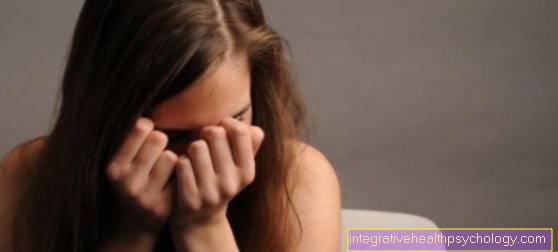
.jpg)


